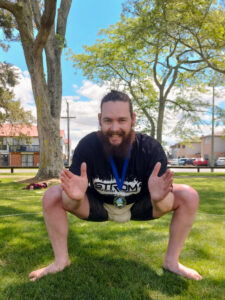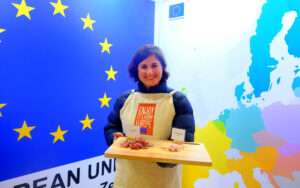Waikato researcher studies the human impact on the Antarctic
Dr Megan Balks’ research focuses on understanding the soils in Antarctic and the impact of human activity to better predict how much or how fast the environment will recover after being disturbed.
In a tiny corner of Waikato University, behind a door bearing a sticker with the slogan ‘Don’t treat soil like dirt’, sits Dr Megan Balks as she simultaneously answers emails from students, prepares slides for lectures, corresponds with colleges from all over the world and writes a multi-choice test for her class.
Dr Balks is in demand. The senior lecturer at the University of Waikato in the earth and ocean sciences department is secretary of ANTPAS (the Antarctica and Sub-Antarctic Permafrost, Soils and Periglacial Environments Group). She has been to Antarctica 18 times, and to Italy, Alaska, Norway, Spain and the United States. This is all thanks to her dedication to soil research.
She has had a focus on understanding the soils in Antarctic and the impact of human activity to better predict how much or how fast the environment will recover after being disturbed.
Megan will be at The University of Waikato stand at the Feildays giving her unique insight to research in Antarctica. The stand will be featuring Antarctic research by Waikato academics. The stand will also feature a Antarctic suit, giving the wearer a glimpse of what it is like to work in Antarctic conditions.
When Dr Balks first came to the University of Waikato she had been working for what was then the DSIR (Department of Scientific and Industrial Research). “I knew some of the guys who were working in Antarctica. They had a project and they wanted someone to help. I was young and keen and put my hand up, I was happy to give them a hand – they didn’t even have to pay me to turn up or anything.”
The opportunity gave her experience which led her to more work in Antarctica.
She is concerned with managing the human impact on the Antarctic.
“Anyone who is there has an impact,” she says. “It’s a pristine environment and they want to keep it that way. Everything we take in gets taken out, including all our human waste, we have pee barrels and poo buckets.
“People want Antarctica to stay pristine but to me it defeats the purpose to lock it up and not let anyone go there”
In Antarctica Dr Balks works with people from the United States, Italy and Spain. “If you work in the field with someone in Antarctica you stay in tents together for several weeks, these are people who become your friends for life.” She also gets opportunities to go on field trips to Alaska, Norway and Russia and farflung places. “It takes me to the ends of the earth
“Every now and then I look at this nice big chunk of warm territory in the middle of the planet and say, sometime I am going to spend some time there,”
she says as she glances over to a picture of her and one of colleges sitting in a very large rock of ice.
Tanya O’Niell, a PHD student studying the cumulative impacts and rates of recovery of ice-free regions in Antarctica following human disturbance, has spent two years working with Dr Balks in Antarctica. “She is a fantastic supervisor, giving you that freedom that you need, but also the ability to reel you back in if you are going off on a tangent
“Without her support I would not be doing what I am doing.”
The Dry Valleys are one of Dr Balks’ favourite Antarctic areas. “They are pretty special. They are a desert environment with fascinating landscape and there is a real isolation. I’ve spent Christmases and New Years down there with two or three other people and you are a long way from anybody else.
“In the summer the temperatures are within usually between -10 and 3 degrees so sometimes it’s just like a frosty morning in Hamilton,” she says as the window behind her shows a bleak Hamilton afternoon.
Rise in populations, pressure of food and water resources, energy resources are the reasons why soil and water management are critical, says Dr Balks, who is on the board of the QE2 Trust, which covenants farmland.
“New Zealand has to realize that our soil underpins so much of what we do. The dairy production, the forestry, the meat industry, horticulture are dependent on the soil resources. I’m optimistic about that but I think we can’t be complacent about how we adapt to giving everyone on the planet a chance for a reasonable life.”
“I came from a farming background, brought up on a sheep farm in the wild tough north Wairarapa. From this I’ve had a huge interest in understanding in the land, earth, landscapes and the connection to the land and the soil.”
She and her husband live on a rural block on Mount Pirongia. It has 24ha of native bush and another 24ha of steep hill country which they run sheep on.
“The very first time I went to the Fieldays it was in 1988 with my son who was about 6 at the time. It was all vast and exciting but it was at the high of time of fitch farming. My son was looking at all the cute ferrets and he put his finger through the cage and one of the ferrets bit him and he got really bad lacerations on his finger. To add to that it was pouring with rain and we got locked out of our car – and that was my first experience of the Fieldays.” she says with a laugh.
“Some of my most memorable moments of Antarctica are not actually the work – the work is tedious hard work. The really nice things are things you do at the end of the day after work is finished – exploring the environment where it sunshines 24 hours a day. Being on top of a mountain at 1am with the spectacular view and the awesome silence would be my best memory.”




